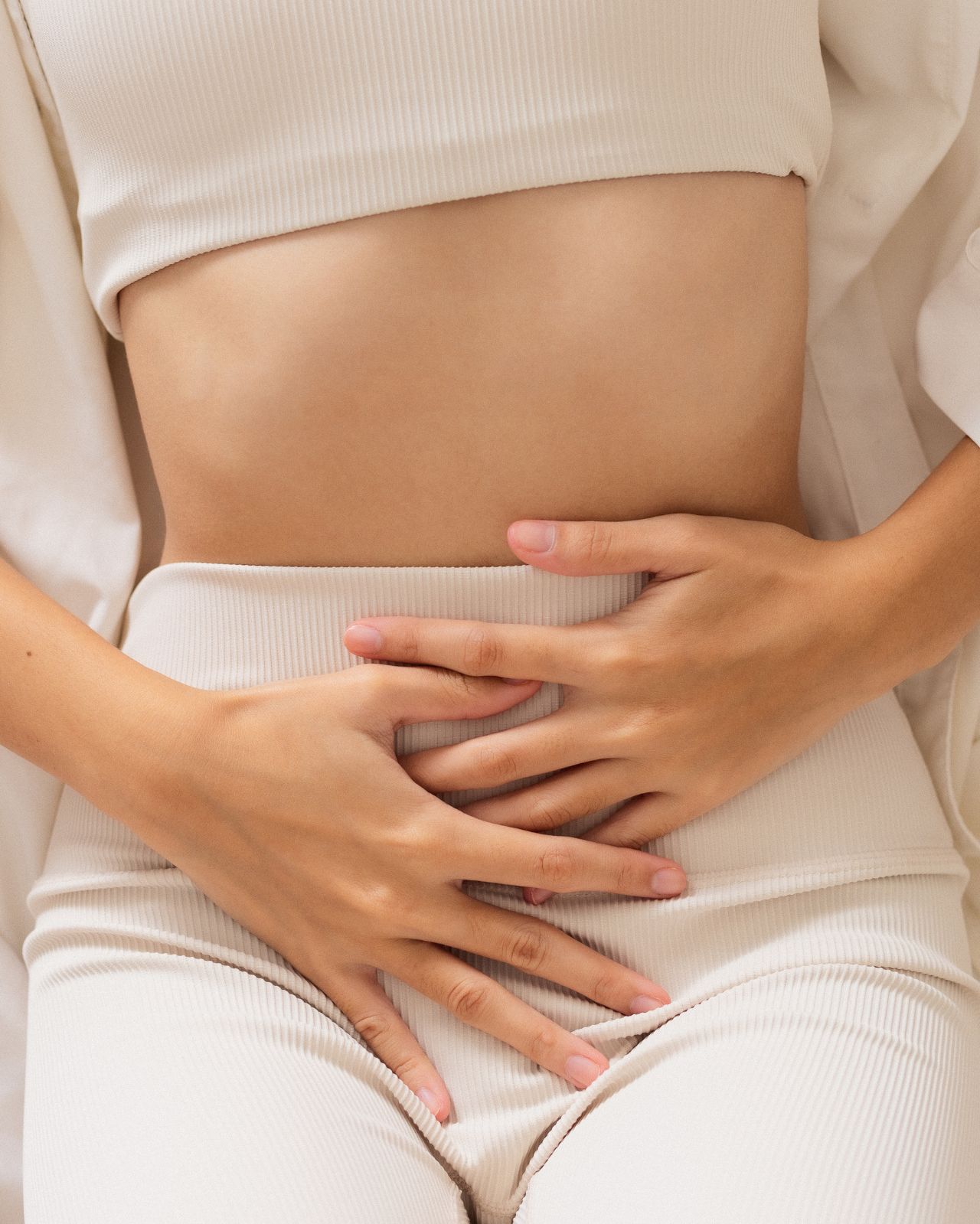
Although irregular cycles or painful monthly cramps can be common issues affecting women, they are by no means something that women must adjust to as their norm. Many intervention methods, both surgical and medical, exist to relieve and in many cases cure symptoms of conditions ranging from menstrual disorders to urinary incontinence. Speak with your clinician if you are experiencing especially painful cramps, severe abdominal pain, or heavy and/or prolonged bleeding between periods or during intercourse, as they could be signs of a more serious women’s health issue.
Heavy periods or abnormal bleeding
If your period lasts for more than seven days, or if your flow is so heavy that it is difficult to maintain your normal lifestyle and activities during your menstrual period, you should see your healthcare provider. Many of the causes of abnormal or heavy bleeding are minor issues that are easily treated, enabling you to resume your normal activities quickly; however, some causes of abnormal bleeding may be more serious and require immediate medical attention.
Approximately one in five women experiences abnormally heavy menstrual bleeding as a part of her regular cycle. This is called menorrhagia. If you consistently experience extremely heavy menstrual bleeding, contact your doctor. Many treatments are available, and we can help you find the best one for you.
Pelvic pain is a common symptom that can occur in a variety of different ways. It can come and go or it can be constant, it can be present in different parts of the pelvic area, and the pain may feel different at different times or with certain activities. If you are experiencing pelvic pain, please schedule an appointment with us to discuss your symptoms. By asking you questions about your pain, we can better identify the cause and decide on a treatment plan.
Uterine fibroids:
A uterine fibroid is a benign, non-cancerous growth that occurs in around 20-25% of women. Fibroids can occur inside the uterus or within the uterine walls, or they can hang off the outside of the uterus on a structure that is similar to a stem or stalk.
Fibroids are usually small – often so small that they are not easily detected during a regular pelvic exam. But they can also be quite large and cause problems, such as:
Fibroids most commonly occur in women between the ages of 30 and 49, but they can appear at any age. It’s not clear why, but African American women are more likely to experience uterine fibroids. If you think you may have a uterine fibroid, see your doctor.
The endometrium is the lining of the uterus. This lining builds up over the course of the menstrual cycle in order to allow a fertilized egg to implant and develop into a fetus. When a fertilized egg does not implant, this lining is shed as your monthly menstrual flow.
For unknown reasons, this shed tissue sometimes ends up outside of the uterus, most commonly in the abdomen. Because the tissue still responds to your hormonal cycle the same way it would inside the uterus, the endometrial tissue in the abdomen can still break apart and bleed. This causes swelling and inflammation in the surrounding parts of the abdomen, and over time it can cause scarring and other problems. This process can cause a lot of pain during menstruation, sex, and even bowel movements. It can also cause problems with fertility.
There is currently no cure for endometriosis, but a variety of treatment options are available. Contact us today if you think you may have endometriosis.
It’s normal for women to experience a small amount of clear or cloudy white vaginal discharge. These natural secretions help to keep vaginal tissues moist and healthy.
The vaginal area normally has a balance of naturally present bacteria and yeast that help to keep the area healthy. When this balance gets upset, it can cause abnormal discharge. You may also experience itching, burning, or an unpleasant odor.
Different factors can upset this balance. Often, the issue is something minor like a regular yeast infection (candidiasis), but bacterial infections, sexually transmitted infections, or even HIV can cause frequent yeast infections or symptoms that mirror a yeast infection.
Over-the-counter treatments may be an option, and some can provide relief, but it’s also a good idea to see your doctor if you’re experiencing vaginal discharge. He or she can help to determine what is causing it and what the best treatment plan will be for you.
Heavy or prolonged menstrual bleeding, bleeding with intercourse, bleeding between periods and especially painful cramps can be signs of a menstrual disorder in women of menstruation age. Depending on the menstrual cycle problem or condition and the severity, medical and/or surgical intervention methods are available.
Menstrual disorders include:
Treatment for menstrual disorders will depend on diagnosis. Medical interventions include:
Surgical options are available to patients with menstrual disorders, and often include minimally invasive procedures with short recovery times.
Procedures include:
The complexity of chronic pelvic pain can be baffling. A variety of health issues such as endometriosis, bladder pain syndrome, irritable bowel syndrome (IBS) , pelvic floor muscle dysfunction, or uterine leiomyoma can account for the severe pain some 20 percent of women experience because of this condition. Defined as persistent pain between the belly button and pubic bone, that lasts for longer than six months, chronic pelvic pain most commonly strikes women.
Input from tissues of your reproductive system, bowels, bladder, peritoneal lining (of the inside of your abdomen), interact with your prior surgical history and environmental stress in making your pain processing system report chronic pelvic pain. Typically, chronic pelvic pain goes beyond the
usual discomfort of having periodic menstrual cramps. Pain that can’t be managed by over-the-counter medications or that is negatively affecting life, work and/or physical activities for several days during the month should be checked out by a qualified specialist.
Chronic pelvic pain can range from dull and aching to sudden and sharp. Common symptoms may include:
Diagnosis and Treatment
Your NorthShore specialist will ask about your medical history, review prior records, conduct a thorough pelvic exam and may order an ultrasound and/or magnetic resonance imaging to pinpoint the specific reason for your chronic pelvic discomfort. Since infections can sometime cause symptoms, your physician may also swab for a small sample of cells from your cervix and vagina for testing much like undergoing a routine Pap smear. A minimally invasive laparoscopic procedure may be recommended to take a sample (biopsy) of tissue to better zero in on the causes of your condition.
Just as there are many causes of chronic pelvic pain, there are many treatment strategies. At the Center for Pelvic Health, our surgeons offer a number of solutions for those suffering from pain caused by endometriosis. For some women, muscular damage or imbalance following pregnancy or irritation of connective tissue around pelvic nerves (including the pudendal nerve) can serve as the source of chronic pelvic pain. When compressed or entrapped, pelvic nerves may continually trigger awareness of the organs or pelvic tissues. Our specialists offer several advanced treatment options, including nonsurgical, minimally invasive ultrasound guided nerve block and trigger point injection therapies to relieve pain
The pelvic organs (the vagina, bladder, rectum and uterus) are held in place by connective tissue and ligaments within the pelvis. The physical stress of pregnancy and childbirth and weakening of tissue due to factors such as menopause and chronic constipation can lead to the walls of the vagina falling down. When this occurs, the pelvic organs behind the vagina (the bladder, rectum and uterus) fall down as well
Changes in pelvic support are often mild and go unnoticed, and in these situations treatment is typically not required. However, more severe weakening of the pelvic floor could lead to diminished quality of life or chronic discomfort. Signs of pelvic prolapse may include:
Diagnosis and Treatment
Your NorthShore specialist will ask about your medical history and conduct a focused pelvic exam. We encourage patients to try non-surgical approaches, such as pelvic floor physical therapy or a pessary (a device worn in the vagina for support), whenever possible to relieve symptoms.
At least 11 percent of women will undergo major surgery for weakening of pelvic support around the uterus, bladder and pelvic area. We offer the latest surgical treatments for prolapse, each selected to meet your unique needs. Prolapse can be fixed with vaginal, laparoscopic or minimally invasive abdominal surgery. In each case, our goal is to provide the least invasive option to successfully relieve symptoms and provide a durable repair.

One of the most common benign tumors in women, uterine fibroids (also known as leiomyomas or myomas) develop in the uterus most typically during the childbearing years. Several different types of fibroids can develop in various places in and around the uterus:
Linked to hormone levels, the growth of fibroids usually diminishes with the onset of menopause.
Uterine Fibroids Symptoms
Some women may have only one fibroid; others may have several in different locations in the uterus. While small fibroids may cause few problem-causing symptoms, larger ones may lead to heavy bleeding and severe pain especially at your time of the month. Other signs of this condition include:
Quality of life concerns may arise with severe symptoms, causing some women to limit their physical and social activities due to fear of soiling their clothes due to excessive bleeding and/or discomfort.
Uterine Fibroids Diagnosis and Treatment
Your NorthShore specialist will ask about your medical history, review prior records, conduct a focused pelvic exam and may order ultrasound and/or magnetic resonance imaging to confirm your diagnosis.
At the Center for Pelvic Health, our physicians have extensive experience treating fibroids and are committed to addressing specific health concerns—from preserving fertility to improving
quality of life. We have conducted multicenter clinical research trials to improve management of these disorders.
Nonsurgical approaches for patients with mild symptoms may include “watchful waiting,” nonprescription over-the-counter medication to reduce pain and/or hormone treatments such as birth control pills to help shrink the size of your fibroids and minimize symptoms.
A nonsurgical minimally invasive technique, Uterine Fibroid Embolization (UFE) is a procedure involving the injection of embolizing agents to block off the blood supply fueling the growth of your fibroid(s). Performed by NorthShore’s Interventional Radiology (IR) team, this advanced approach specifically targets the uterine growths. The uterus and ovaries remain unaffected. The Center for Pelvic Health team works collaboratively with our IR colleagues, providing referrals for patients who might be good candidates for UFE.
Fibroids may also be removed surgically. Our fellowship-trained surgeons are skilled in the most advanced laparoscopic and minimally invasive “fertility” sparing techniques:
Urinary incontinence, which is an inability to control release of urine, can be both a costly and embarrassing problem. Sometimes it can be caused by a temporary condition, such as a urinary tract infection, and other times urinary incontinence in women can be an ongoing issue caused by changes in muscles and nerves around the bladder.
Urinary incontinence is a common condition among women over the age of 35, and many patients feel it is an expected part of normal aging. This is not the case, and fortunately many treatment options are available for both types of urinary incontinence.